Solo Training, don’t forget it – A Vital Part of Martial Arts Mastery
From 武神館兜龍 Bujinkan Toryu by Toryu
This text about don’t forget about solo training summarizes a chapter from Masaaki Hatsumi’s “Hiden Togakure Ryū Ninpō.” It emphasizes the importance of solo training in martial arts, drawing on Hatsumi’s experiences in nature.
Don’t Forget Solo Training – A Vital Part of Martial Arts Mastery
In modern martial arts, practitioners often neglect solo training, focusing solely on group classes and teacher-led instruction. However, the author of “Hiden Togakure Ryu Ninpo” highlights the importance of solitary practice, drawing on personal experiences from the Japanese warrior tradition. Early training involved long, isolated periods in the mountains, where nature became the author’s sparring partner.
Trees, branches, and roots replaced human opponents, offering unique challenges for strikes, throws, and sweeps. This form of training developed not only physical skills but also mental clarity, awareness, and the ability to read the environment. Including the animals inhabiting the forest. Through this process, the practitioner learned valuable lessons about both the martial arts and life itself.

Solo Training vs. Group Instruction
While an excellent teacher is a significant asset. The author argues that martial arts students often encounter teachers who lack the depth of knowledge they claim to possess. Relying entirely on such instruction can lead to becoming a “puppet,” performing techniques without genuine understanding. In contrast, solo training forces the individual to develop their skills through personal trial and error. Leading to a deeper, more authentic mastery. The freedom to explore techniques independently can foster creativity and self-discovery that structured classes may stifle.
The Role of the Teacher
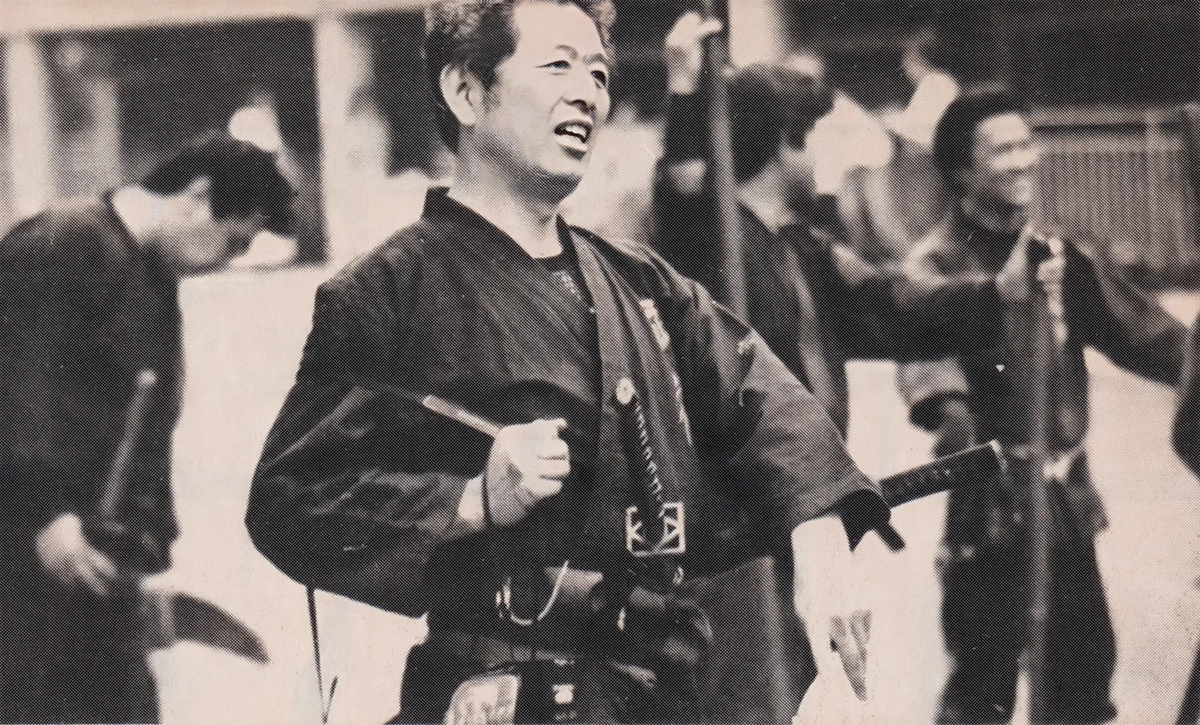
Interestingly, even when a skilled teacher is available, students may still choose to train independently. The author, as a martial arts instructor, has observed that some students prefer their methods. Even when they may be misguided.
In such cases, rather than forcing the student to adhere strictly to the teacher’s lessons. The author allows them to follow their path. This hands-off approach can sometimes lead the student to unexpected learning moments. Much like an apprentice who absorbs knowledge through prolonged exposure rather than direct instruction.
The Balance Between Discipline and Freedom
The key to effective martial arts training lies in balancing discipline with freedom. Overloading a student with too many lessons can be counterproductive, leading to burnout or confusion. The author believes in allowing students to progress at their own pace. Offering advanced techniques only to those who are ready to handle them. True martial arts mastery isn’t about memorizing countless moves or self-defense tricks—it’s about cultivating awareness, mental clarity, and readiness.

Solo Training and Broader Learning
The author encourages martial arts students, especially young ones, to embrace solo training as a part of their personal growth. Martial arts is not just about physical combat but a holistic discipline that includes philosophy, psychology, history, and even subjects like physics and chemistry. By being fascinated with martial arts, students can find motivation in every area of life. Turning each experience into an opportunity for learning and self-improvement.
The Philosophy of Continuous Learning
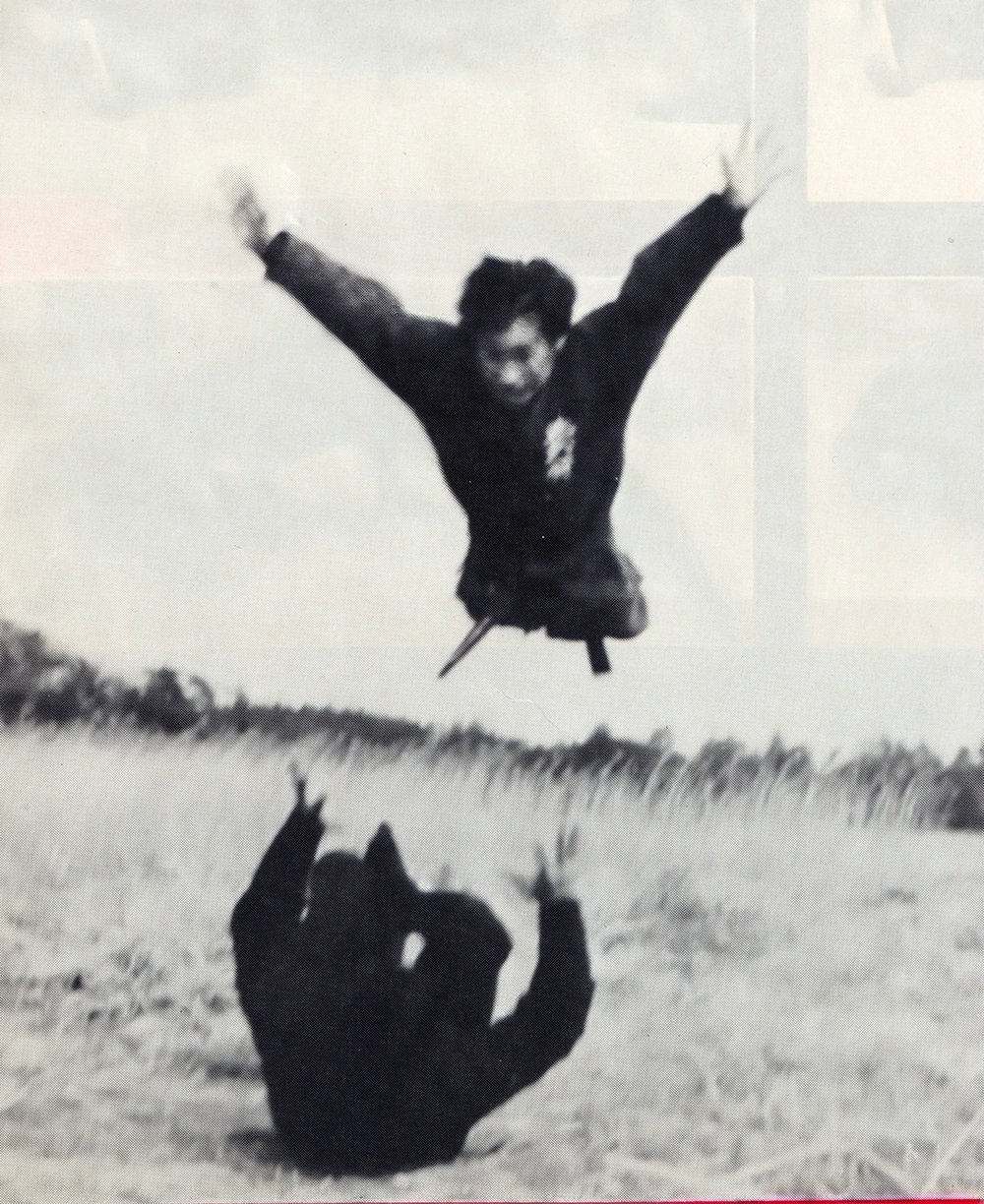
Ultimately, martial arts is a lifelong journey. The phrase “Jinsei hitori geiko nari” (“Life is made up of solo training”) encapsulates this philosophy. Every moment of life, whether in the dojo or outside, offers lessons if one remains open and committed to self-examination. Solo training not only builds martial arts skills but also fosters personal growth. Leading to a life rich in discoveries and insights.
In conclusion, solo training should not be forgotten. It is a powerful tool for developing both the body and the mind. Enabling martial artists to achieve true mastery and personal fulfillment.
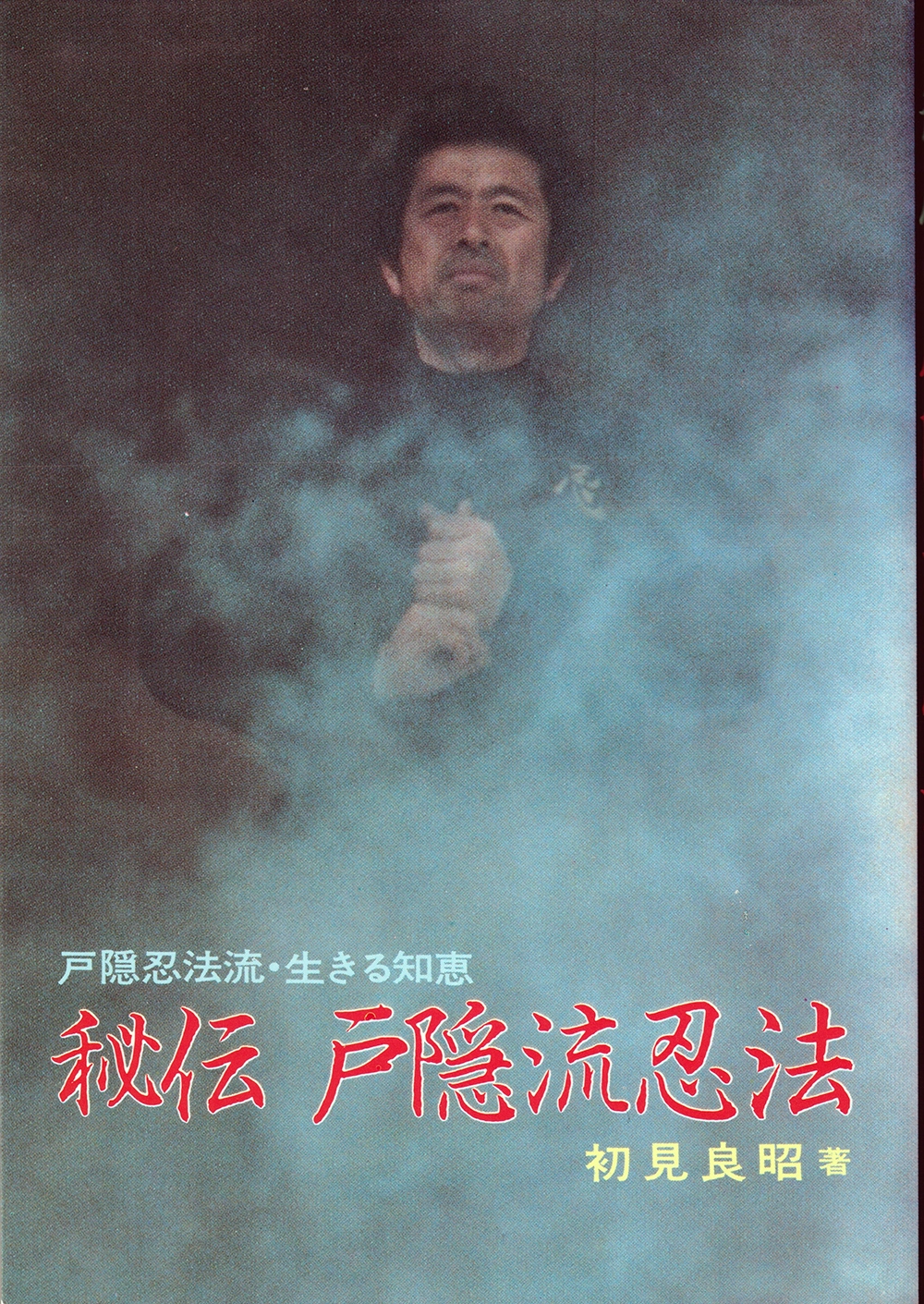
More about this book
戸隠忍法流・生きる知恵
秘伝戸隠流忍法
初見良昭著
1989年4月30日発行
Togakure Ninpō Ryū: Wisdom of Living
Hiden Togakure Ryū Ninpō (Secret Tradition of Togakure Ryū Ninpō)
Written by Masaaki Hatsumi
Published on April 30, 1989
ISBN4-8069-0240-1 C2075 P1130E
Mitsugu Saotome
Mitsugu Saotome (1926–2008), pen name of Kanegae Hideyoshi, was a renowned Japanese writer of historical fiction. Winning prestigious awards like the Naoki Prize and Yoshikawa Eiji Prize for Literature. By 1989, he was a highly respected literary figure. Known for his expertise in Japanese history, particularly from the Shōwa and Heisei periods.
His endorsement of Masaaki Hatsumi’s book “Hiden Togakure Ryu Ninpo” in 1989 was a significant honor due to Saotome’s established reputation. As a leading author of historical narratives, his approval carried weight.Especially for a work dealing with Japan’s martial and ninja traditions. Saotome’s validation not only lent credibility but also likely attracted wider attention to Hatsumi’s book. Making it more appealing to readers interested in history and martial arts.
In short, Saotome’s endorsement was a mark of quality. Given his influence and prestige in Japan’s literary world, making it a substantial boost for the book’s reception and success.
A Book that Serves as a Guide to Life
Author: Saotome Mitsugu
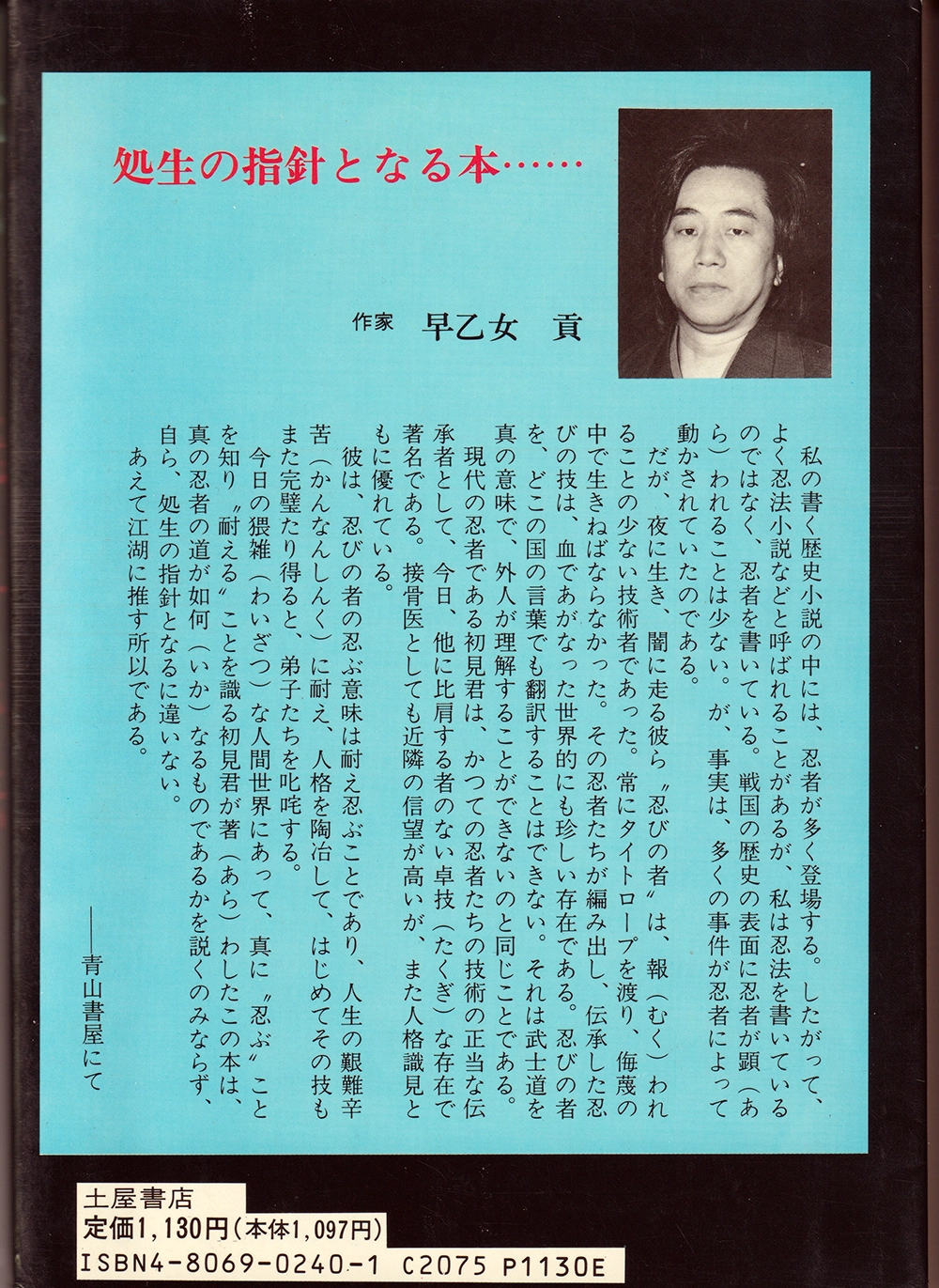
In my historical novels, many ninjas make appearances. As a result, they are often called “ninjutsu novels,” but I am not writing about ninjutsu, I am writing about ninjas. It is rare for ninjas to surface in the mainstream history of the Warring States period. However, in reality, many events were shaped by the actions of ninjas.
Yet, these “shinobi” who lived in the night and moved in the shadows were often unrecognized technicians. They constantly walked a tightrope and had to survive in an environment filled with contempt. The techniques developed and passed down by these ninjas are a unique, blood-earned art form in the world. The term “shinobi” cannot be accurately translated into any other language, just as it is difficult for foreigners to fully comprehend the true meaning of bushidō.
Hatsumi-kun, a modern-day ninja, is the legitimate successor to the techniques of the former ninjas and is famous today for his unparalleled skill. He is highly respected in his community as a skilled bonesetter, and his character and wisdom are equally admirable.
Hatsumi teaches his disciples that the true meaning of being shinobi lies in enduring hardship, and that only by overcoming the trials and tribulations of life can one develop their character, thereby perfecting their techniques.
In today’s chaotic human world, Hatsumi-kun, who truly understands the meaning of endurance and perseverance, has written this book. It not only explains the true path of the ninja but will surely serve as a guide for living. This is the reason I confidently recommend it to the public.
— At Aoyama Shoten
The post Solo Training, don’t forget it – A Vital Part of Martial Arts Mastery appeared first on 武神館兜龍 Bujinkan Toryu.…

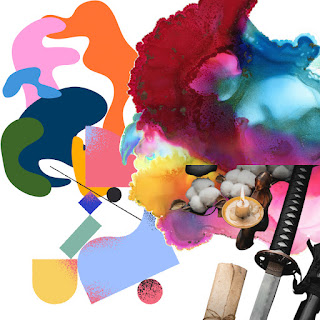
.jpeg)



.jpeg)






